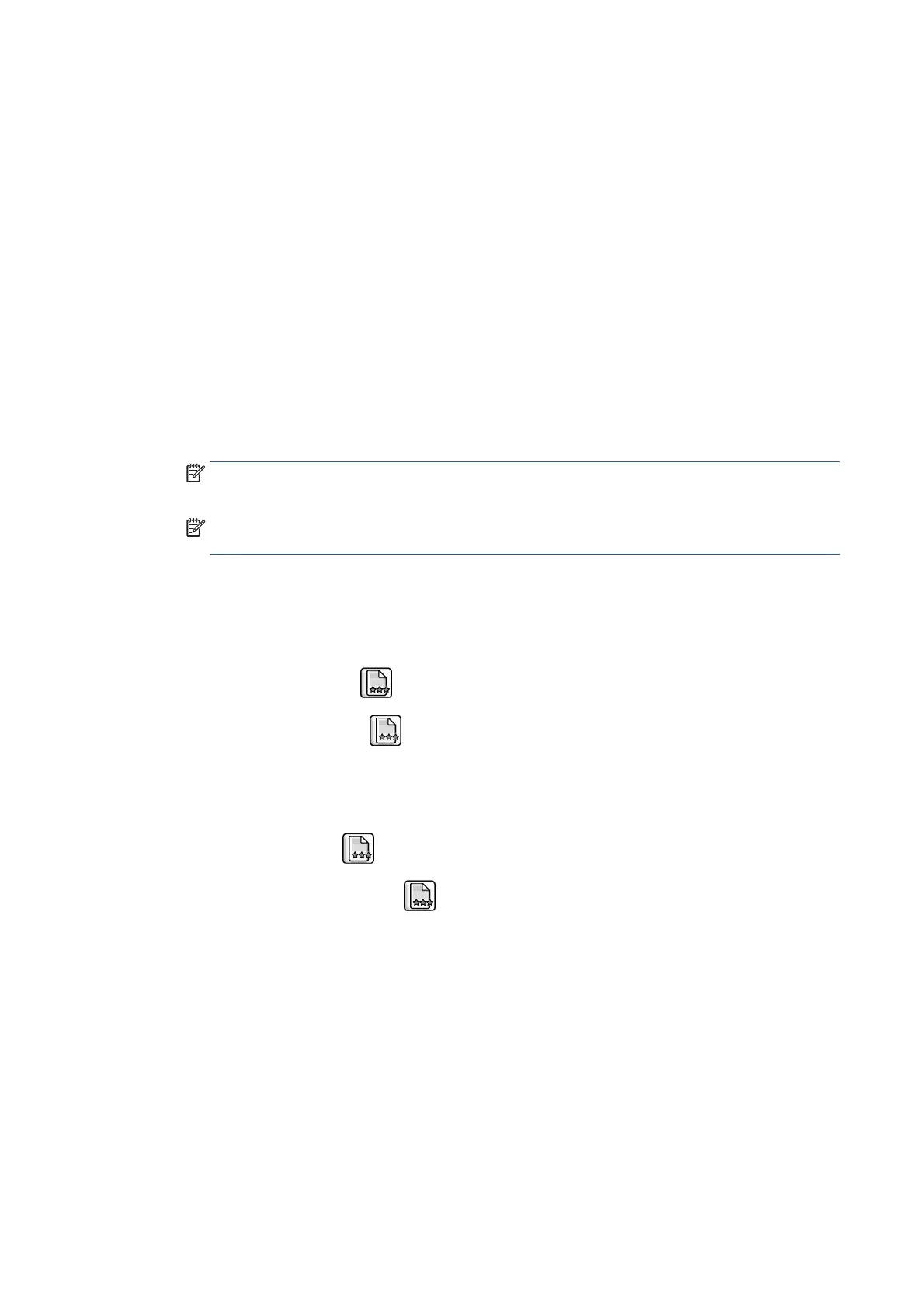Initial print-quality troubleshooting actions
For the majority of print-quality problems, a Call Agent can try to troubleshoot the printer by requesting that
the customer performs the following troubleshooting actions. Using this process, most problems can
resolved without the need of an on-site visit.
Perform the following actions in the order described:
1. Printer Configuration:
●
Make sure that the paper type selected in the Front Panel is the same as the paper type loaded
into the printer. To check this, use the View paper information key on the front panel. At the same
time, check that the paper type has been calibrated. Also make sure that the paper type selected
in your software is the same as the paper type loaded into the printer.
●
Check that the customer is printing on the correct side of the paper.
●
Check that the customer is using the most appropriate print-quality settings. If Fast or Normal has
been selected, the customer may not achieve the most accurate colors. Set the print-quality
setting to Best. See also “Select print quality” in Using your printer.
NOTE: If the customer has set the print quality with the printer driver or with the Embedded Web
Server, this will override a print-quality setting from the front panel.
NOTE: You cannot change the print quality of pages that the printer is already receiving or has
already received (even if they have not started to print yet).
●
Dry time should be set to “Optimal”.
2. Check if the latest version of the firmware is installed. If not, install the latest firmware revision.
3. Check that your ink cartridges and printheads have not passed their expiration dates.
4.
Perform Printhead recovery:
icon, then Clean printheads.
5.
Perform Printhead alignment: icon, then Align printheads.
6. If a new paper type has been created from the Color Center, check that the correct parent paper type
has been used. This is because there are some ‘high ink’ and ‘low ink’ paper types for some categories of
paper used, such as the photo category.
7.
Perform color calibration:
icon, then Calibrate color.
8.
Perform paper advance calibration: icon, then Calibrate paper advance.
9. If you are using Application Color Management check the following.
●
Ensure the within the color tab of the driver, Application manage colors has been selected.
●
That the color profile you are using in the application corresponds to the paper type and
printquality settings.
●
In addition for PostScript printers check the following.
138 Chapter 7 Print quality ENWW

